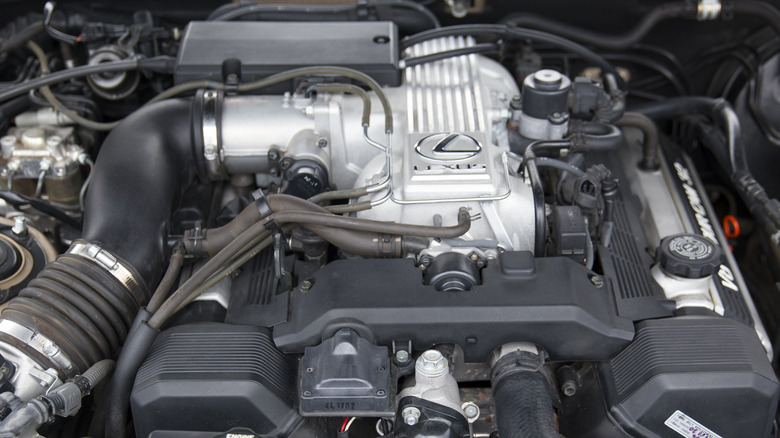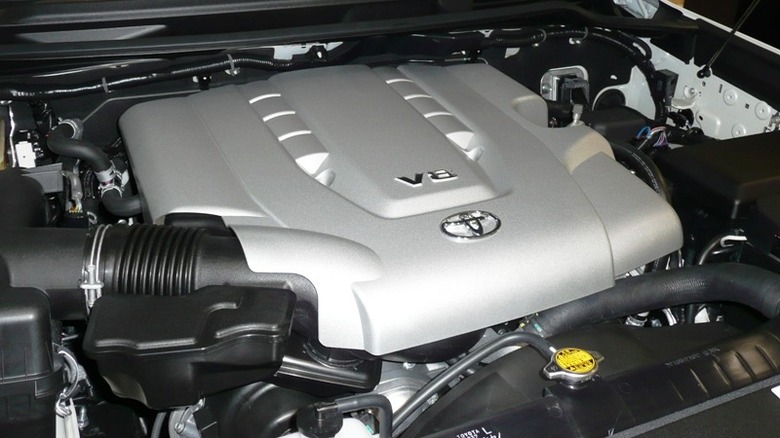1UZ Vs. 2UZ: What's The Difference Between These Toyota V8 Engines?
For nearly a quarter of a century, Toyota produced a series of engines known as the UZ family, which SlashGear has ranked as the most reliable in Toyota's history. These were several V8 engines that were designed to appear in some of Toyota's SUVs and also in vehicles from the company's luxury brand, Lexus. The first of these engines — the 1UZ-FE — first hit the scene in 1989, and that was followed by the 2UZ-FE nine years later. Being in the same engine family, you would think that these would generally be the same engine, and in many ways that is true. They are both 32-valve V8 engines and follow similar design structures.
While the 1UZ and 2UZ have a lot in common, there are some pretty major things that set the two engines apart from one another. One of those reasons isn't particularly surprising, as it is a pretty common derivation amongst any family of engines. The other is a little more unusual, especially when you consider the third and final engine in the family, the 3UZ-FE. When it comes right down to it, the differences between these two engines are the displacement volume and what the engine blocks are made of.
[Image by Mr.choppers via Wikimedia Commons | Cropped and scaled | CC BY-SA 3.0]
Bore, stroke, and material
The more common difference between the Toyota 1UZ-FE and 2UZ-FE engines simply comes down to size. The 1UZ features a bore and stroke of 3.44 in. by 3.25 in., making for a 4.0L engine displacement. In terms of power, it was quite satisfactory, generating up to 256 hp and 245.4 lb-ft of torque. For someone looking to get a luxury sedan like the Lexus LS 400 or the Lexus SC 400 grand tourer, these V8 engines could give you a blend of good power and comfort.
On the other hand, the 2UZ engine bored it out to 3.7 in. and increased the stroke to 3.31 in., bumping up the displacement to 4.7L. This gave the engine a moderate jump in power, upping things to 271 hp, but in terms of torque, there was a massive increase, generating up to 315 lb-ft. This is why this engine was used more in the SUV and pickup truck models from Toyota and Lexus, like the Lexus LX 470 and the Toyota Tundra.
The other major difference between the two was the material used for the engine block. The 1UZ was a pretty standard aluminum block, but Toyota opted to use a cast iron block for the 2UZ instead. Because it was being used with heavier duty vehicles, the cast iron decision gave the engine a bit more reliability to handle that extra power and torque. The reason it is especially odd is that the 3UZ-FE engine went back to having an aluminum engine block. Beyond these things, the Toyota 1UZ and 2UZ work quite similarly.
[Image by Ypy31 via Wikimedia Commons | Cropped and scaled | Public Domain]

